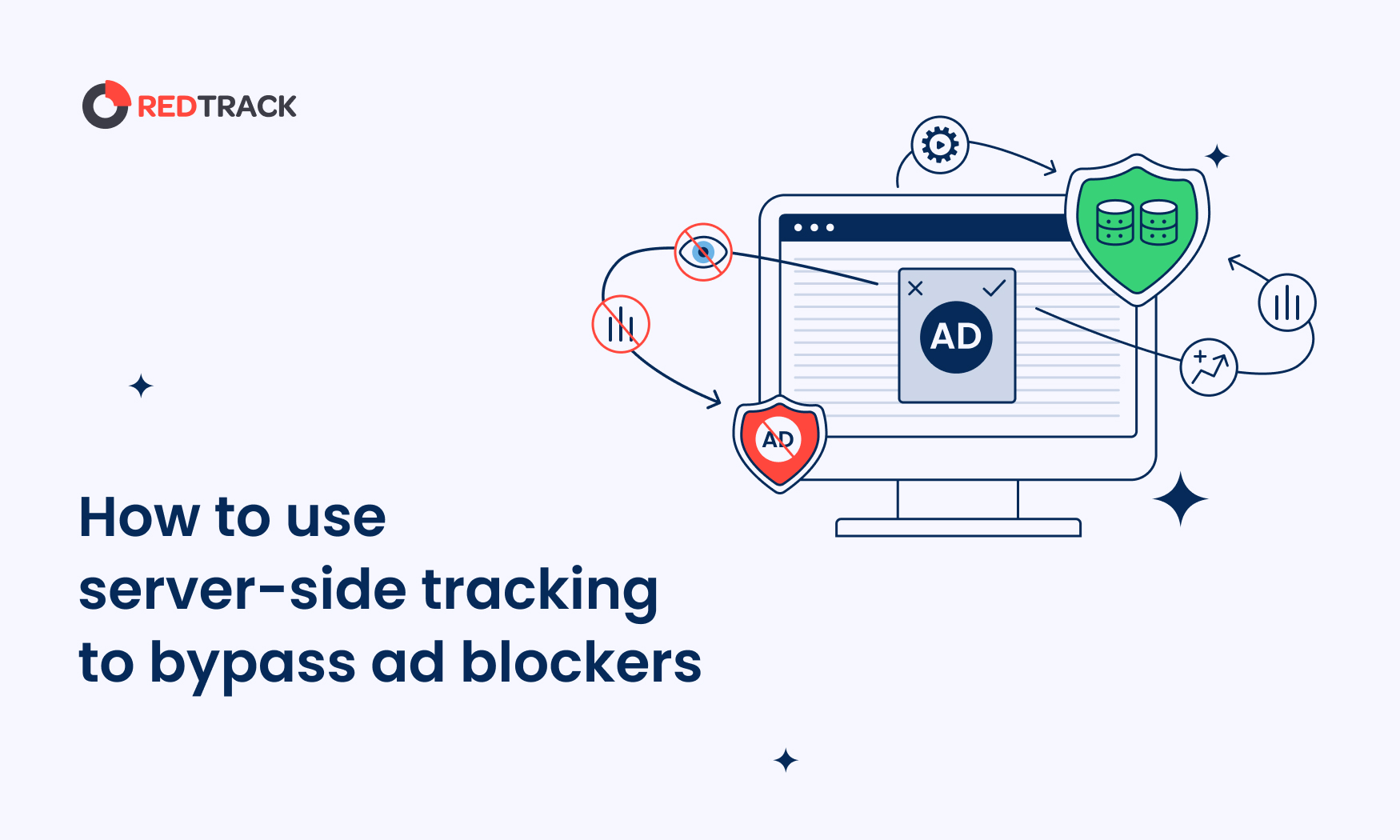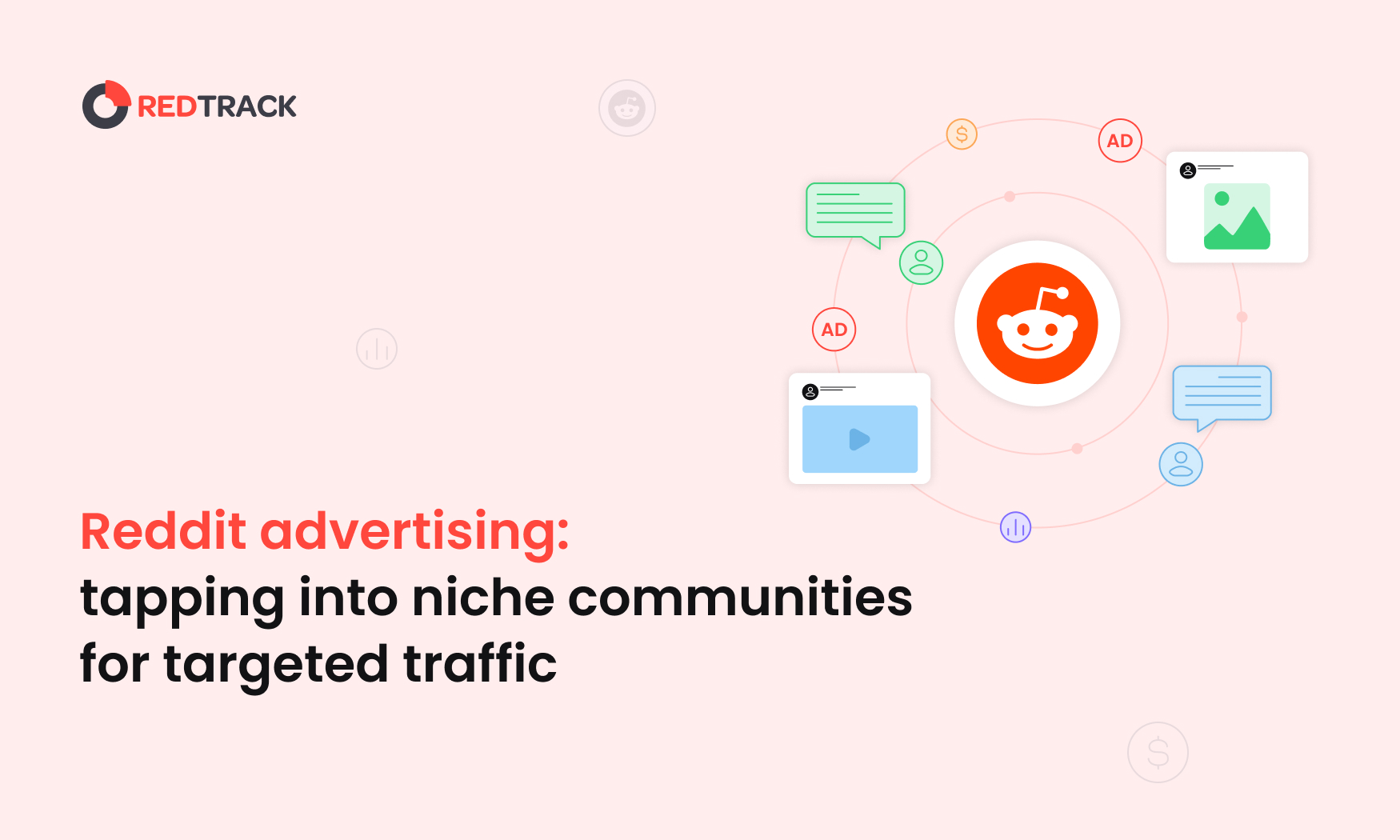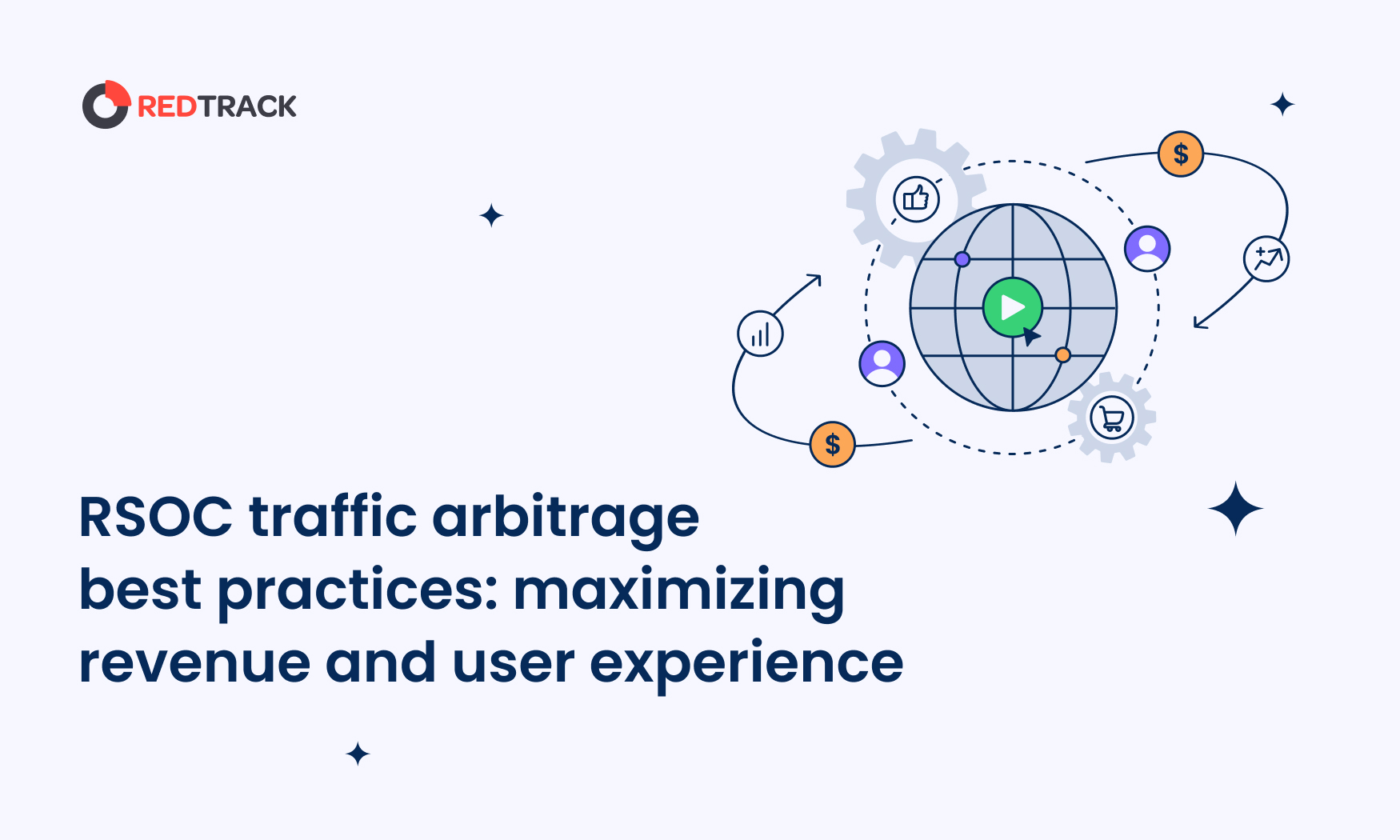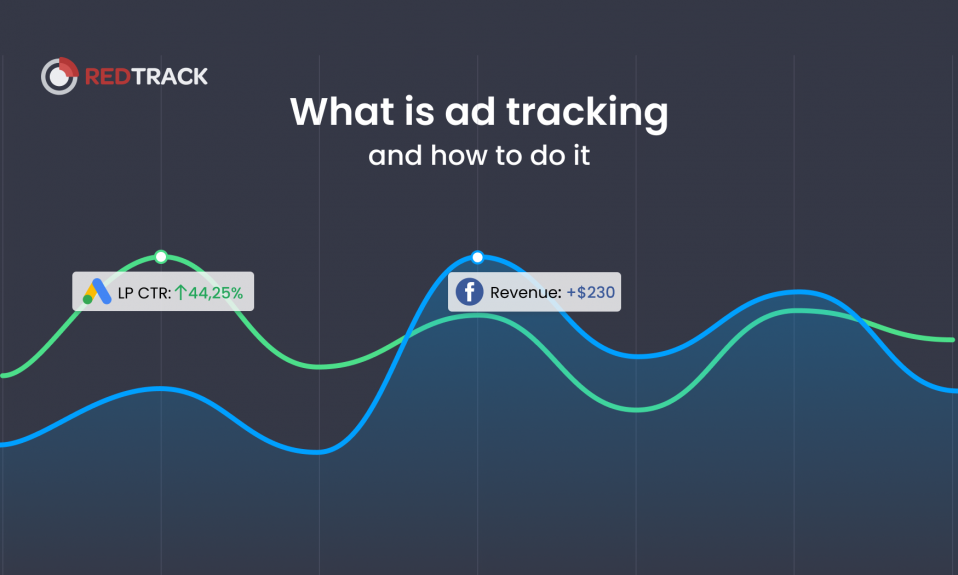
As digital advertising evolves, advertisers face a growing challenge: ad blockers. These tools are designed to block intrusive ads and protect user privacy, but they often have a significant downside for businesses that rely on online marketing. One of the most effective solutions to combat the negative effects of ad blockers is server-side tracking. This method bypasses traditional browser-based tracking systems and ensures that advertisers can collect accurate data.
In this blog, we’ll explore how server-side tracking works, why it’s effective, and how tools like RedTrack can help you implement it effectively.
Ad blockers and their impact on advertisers
Ad blockers are software programs or browser extensions designed to prevent unwanted ads and tracking scripts from running on a user’s device. They work by identifying and blocking requests to known ad servers and tracking domains, preventing these scripts from being downloaded and executed by the browser.
Users install ad blockers to eliminate distractions from ads, improve browsing speeds, and protect their privacy by blocking cookies and tracking scripts. While this improves the user experience, it creates challenges for advertisers and advertising networks who rely on collecting user data to run targeted campaigns. The widespread adoption of ad blockers, especially in regions with high tech-savvy audiences, makes it increasingly difficult for advertisers to track user behavior effectively.
Challenges for advertisers
When ad blockers are active, they can have significant consequences on advertisers’ ability to run effective campaigns. Some of the main challenges include:
- Missing data: Ad blockers prevent tracking pixels and other tools from recording interactions like page views, conversions, and user behavior, leading to gaps in data.
- Inaccurate attribution: With incomplete data, advertisers struggle to accurately attribute conversions to the right marketing efforts. This can skew the perceived effectiveness of campaigns and lead to poor optimization decisions.
- Limited insights: Without access to full user behavior, advertisers lack the insights to make informed decisions about ad spending, audience targeting, and content optimization.
To combat the issues posed by ad blockers, many advertisers are turning to server-side tracking as a solution. Server-side tracking enables advertisers to collect data directly from their own servers, bypassing the user’s browser entirely. This means that even if a user has an ad blocker enabled, the tracking data can still be captured and recorded accurately.
What is server-side tracking?
Server-side tracking operates by moving the tracking process from the user’s browser (client-side) to the advertiser’s own server. In traditional tracking methods, when a user clicks an ad or performs a conversion action, a tracking pixel or script is triggered within the browser, sending data back to the advertiser. However, ad blockers can detect and block these requests.
In server-side tracking, when a user interacts with your website, the relevant data (such as page visits, clicks, or conversions) is sent to your server. The server then forwards this information to your tracking system or analytics tool, effectively bypassing any browser-based restrictions. This means the data is captured regardless of whether the user has an ad blocker enabled.
Differences from traditional tracking
The key difference between server-side tracking and client-side tracking lies in where the tracking scripts are executed:
- Client-side tracking: Scripts are run in the user’s browser. Tools like Google Analytics and Facebook Pixel are examples of client-side trackers. These scripts rely on the user’s browser to send data back to the server, making them vulnerable to being blocked by ad blockers.
- Server-side tracking: The data collection happens on the advertiser’s server, not on the user’s device. Because the tracking script runs on the server, ad blockers cannot interfere with the process.
Why server-side tracking overcomes ad blockers
Ad blockers are specifically designed to block JavaScript-based tracking scripts from running on users’ browsers. These scripts include tracking pixels, analytics tools, and cookies that gather information about user behavior. Ad blockers identify and block these scripts by matching them to known tracking domains or patterns in the page’s code. This causes advertisers to lose valuable data about clicks, conversions, and user interactions because the scripts never run or report back to the server.
Server-side tracking bypasses this
Because server-side tracking shifts the entire tracking process to the advertiser’s server, it sidesteps the browser entirely. Since ad blockers are focused on blocking client-side JavaScript files or third-party requests from the browser, they have no way to interfere with server-side communications.
Server-side tracking does not rely on the user’s browser to collect data. Instead, when a user interacts with a website or app, the information is sent directly to the server. The server processes this data and sends it to the tracking systems. Since ad blockers cannot block data from being sent from the advertiser’s server, server-side tracking ensures that no critical data is lost, even if a user has installed an ad blocker.
Advantages of server-side tracking
The transition to server-side tracking offers numerous benefits for advertisers, especially those impacted by the growing adoption of ad blockers. Here are some of the key advantages:
Complete and accurate data collection
With server-side tracking, advertisers can capture a complete set of data, including all interactions such as page views, clicks, and conversions. Because the tracking data is sent from the server instead of the user’s browser, ad blockers cannot disrupt the flow of information. This ensures that advertisers have access to the full picture of user behavior and campaign performance.
Improved attribution and insights
One of the biggest challenges with ad blockers is the loss of attribution data. Without knowing where conversions came from, it’s difficult to measure which campaigns are delivering the best results. Server-side tracking restores accurate attribution because all data points (even those blocked by ad blockers on the client side) are recorded at the server level. This gives advertisers better insights into their campaigns, helping them to optimize targeting, creative strategies, and budget allocations based on reliable data.
Enhanced campaign performance with RedTrack
By integrating server-side tracking into a performance-tracking platform like RedTrack, advertisers can further enhance their campaign optimization. RedTrack’s auto-optimization features use the complete data captured by server-side tracking to automatically allocate ad budgets to the best-performing channels. With this comprehensive data set, advertisers can refine their strategies more effectively, improve ROI, and minimize wasted ad spend.
Setting up server-side tracking with RedTrack
Now that we’ve established the benefits of server-side tracking, let’s walk through the steps to set it up using RedTrack, a leading performance tracking and analytics platform:
1. Enable server-side tracking
To enable server-side tracking within RedTrack, you can navigate to the dashboard and select the option to enable server-side tracking. RedTrack provides a simple and intuitive interface to activate this feature, ensuring that your campaigns will now be tracked from your server rather than relying solely on browser-based scripts.
2. Configure postback URLs
Postback URLs are essential for passing conversion data back to RedTrack from your server. Once server-side tracking is enabled, you’ll need to set up postback URLs that send data from your server to RedTrack’s system. This ensures that all conversion data is recorded accurately, even when ad blockers are in place. RedTrack provides detailed guidelines on how to configure these URLs to avoid any tracking issues.
3. Link traffic sources
To ensure that all data flows seamlessly into RedTrack, it’s important to connect your ad networks and traffic sources. This involves integrating various platforms like Facebook, Google Ads, and affiliate networks with RedTrack to pull all tracking data together. By linking traffic sources, you can make sure that RedTrack receives updates about your campaigns, providing you with a centralized dashboard to monitor performance.
4. Test and monitor
Before going live, it’s important to thoroughly test your server-side tracking setup. This includes verifying that your postback URLs are configured correctly and checking that data is being collected as expected in the RedTrack dashboard. After launching your campaigns, continue to monitor the tracking setup regularly to ensure that RedTrack is pulling inaccurate data, especially as you add new traffic sources or update your campaigns.
Common mistakes to avoid
While server-side tracking offers many benefits, it’s important to avoid some common mistakes during the setup process, such as:
Postback URL setup errors
One of the most frequent mistakes is incorrect configuration of postback URLs. If postback URLs aren’t properly set up, it can lead to data loss or inaccurate conversion tracking. Be sure to follow RedTrack’s guidelines closely when configuring postback URLs to ensure you don’t miss out on valuable conversion data.
Neglecting privacy compliance
Server-side tracking may bypass ad blockers, but it doesn’t bypass privacy regulations. Ensure that your tracking setup complies with data privacy laws like GDPR and CCPA. Obtain user consent where required, and be transparent about how data is collected and used.
Why server-side tracking is essential
Server-side tracking is no longer just a nice-to-have option for advertisers—it’s becoming essential for any data-driven business. Here’s why:
Accurate data collection despite ad blockers
As more users install ad blockers to prevent intrusive ads, advertisers must adopt new methods to ensure they don’t lose valuable data. Server-side tracking allows you to maintain full visibility into your campaigns by capturing data that would otherwise be blocked. With this solution, you can still track user interactions, even with ad blockers active.
RedTrack simplifies the process
RedTrack’s platform makes server-side tracking accessible and easy to set up, even for those without a technical background. The platform offers a simple process for enabling server-side tracking, configuring postback URLs, and monitoring data collection. It also provides real-time data reporting and automatic optimization features, allowing you to continuously improve your campaigns based on accurate, comprehensive insights.
Start using server-side tracking today
Don’t let ad blockers limit your potential—start using server-side tracking today and take control of your digital marketing success.
With RedTrack’s server-side tracking feature, you can ensure accurate data collection, improve campaign performance, and make smarter decisions with reliable attribution data, helping you overcome the challenges of ad blockers and gain full visibility into your campaigns.












